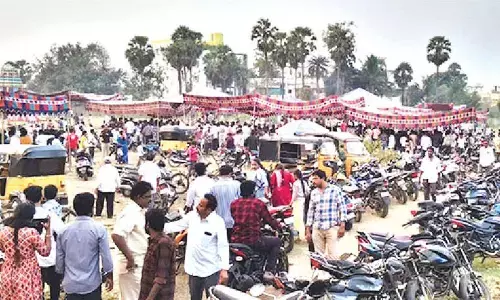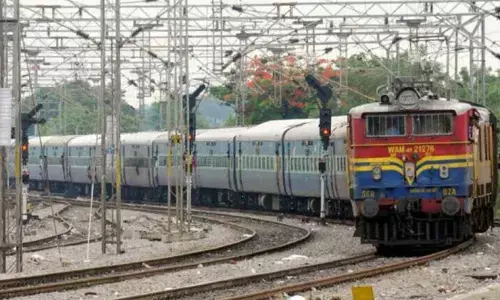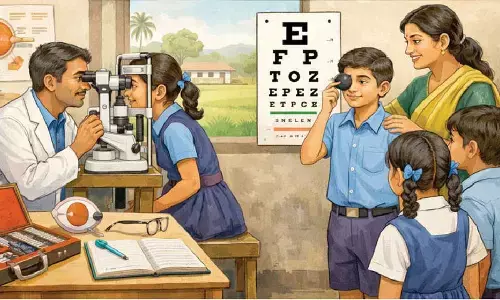Making India's roads safer - I

Transport has become an integral part of the life of every human being in today’s world. One can hardly find a person who does not use one form of transport or another.
Transport has become an integral part of the life of every human being in today's world. One can hardly find a person who does not use one form of transport or another. The flip side, however, is that, while transport has shrunk the time taken to cover distances, it has, simultaneously, enhanced the risk of injury and even death.
Millions of people lose their lives every year on account of road accidents. Taking note of the gravity of the situation, many initiatives have been taken internationally. Road regulations were introduced as long ago as in 1903, in the book "Rules of the Road" authored by William P Eno, known as the "father of traffic safety". The book introduced many road regulations, including the need for slow traffic to remain on the right and cars only to pass on the left, as well as one-way streets, crosswalks for pedestrians, stop signs and safety islands.
The Indian Motor Vehicles Act 1914, the first statutory instrument to regulate road traffic in India, was subsequently replaced by the Motor Vehicles Act of 1939. Following suggestions made by the Supreme Court of India in a judgment interpreting that act, the government of India piloted the enactment, by Parliament, of the Motor Vehicles act, 1989, a consolidated, and rationalized, version of its precursor.
At the international level, the first initiative was Geneva Convention on International Road Traffic, 1949 which was signed by several countries as signatories including India. The Brasilia Declaration on Road Safety was adopted at the Second Global High-level Conference held in 2015, a document to which India is also a signatory. In another initiative of great significance, the International Road Assessment Programme (IRAP), a worldwide umbrella arrangements, was started in 2017 and works towards saving lives and preventing serious injuries on account of road accidents.
The United Nations General Assembly, in 2020, adopted a resolution on the subject of', improving global road safety and proclaimed 2021–2030 as the Decade of Action for Road Safety, with a view to preventing at least 50% of deaths, and injuries, on account of traffic accidents, during that period. The World Health Organization and other United Nations Organisations have, in cooperation with other partners in the UN Road Safety Collaboration (an informal consultative mechanism with the objective of facilitating international cooperation and strengthening global and regional coordination among UN agencies and other international partners to implement the 2021 UN Resolution on Improving Global Road Safety), developed a global plan for the decade of action, which was released in 2021.
Road safety continues to be a major developmental and public health concern in India.The recent death, in a road accident, of Cyrus Mistry, formerly Chairman of the Tata Group of industries highlighted, once again, the alarming number of fatal road accidents that occur every year in India. The country records about 80,000 fatal road accidents every year, accounting for 13% of such incidents all over the world. Most of the accidents can be traced to carelessness, or the lack of road safety awareness, on the part of the driver.
Recognising road safety education as essential, the Government of India has taken several initiatives over the years, which include an amendment to the Motor Vehicles act, (1988), brought out in 2019, to improve road safety, introducing heavy penalties for various offences and the Three Year Action Agenda of NitiAayog, highlighting the need for standardising the reporting of road accidents and preparing a plan for action thereafter. Talking of states, it is interesting to note that Mysuru, one of the largest cities in Karnataka state, is regarded as the safest city for driving in India, while Indore another large city in Madhya Pradesh state, is known for its ethical drivers.
Among steps to be taken in the country to mitigate the incidence and impact of road accidents are improving the levels of education about road, safety measures, strict regulation enforcement of the laws in force, adopting the latest available technology, ensuring that the design of vehicles and road infrastructure and compliance with the relevant regulations, and arranging for proper training and capacity building. The Government of India has also called for a joint effort, by the state and central governments, to facilitate improvement of road and safety infrastructure. It has entrusted to the Indian Road Safety Campaign (a non-profit organization), the task of leading road sector activities aimed at upping, grassroots level citizens Involvement in measures across the country. The World Bank has also stressed the need for launching state road safety activities in a national mission mode for achieving 'vision zero'.
Various countries in the world follow different arrangements for cars to drive on roads, with the majority of them preferring the left side. The left side is, in fact, considered the safer one, since the driver's dominant side is closer to the incoming vehicles, and the driver can see better, since the right eye is more central. For drivers driving on one side of the road, it can be stressful, and confusing, when they are required to drive on the other side, when abroad. Cars, in such countries, usually carry a sign, to warn the drivers, of vehicles behind them, not to expect hand signals from the side they are used to.
Inadequate training facilities, inefficient teachers, or a lack of attention on the part of the person, taking the test, can result in the driver – to – be confusing, not only himself or herself, but also other motorists while driving. The story goes that there was this man driving a car behind another car driven by a lady. The man's car crashed into the vehicle in front and, upon being questioned by the police, his defence was, "after all the signs she made, I thought she was going up!"
(The writer was formerly
Secretary, Agriculture,
Government of India, Chief
Secretary, Government of Andhra Pradesh, and Member, National Disaster Management Authority (NDMA), Government of India)

















